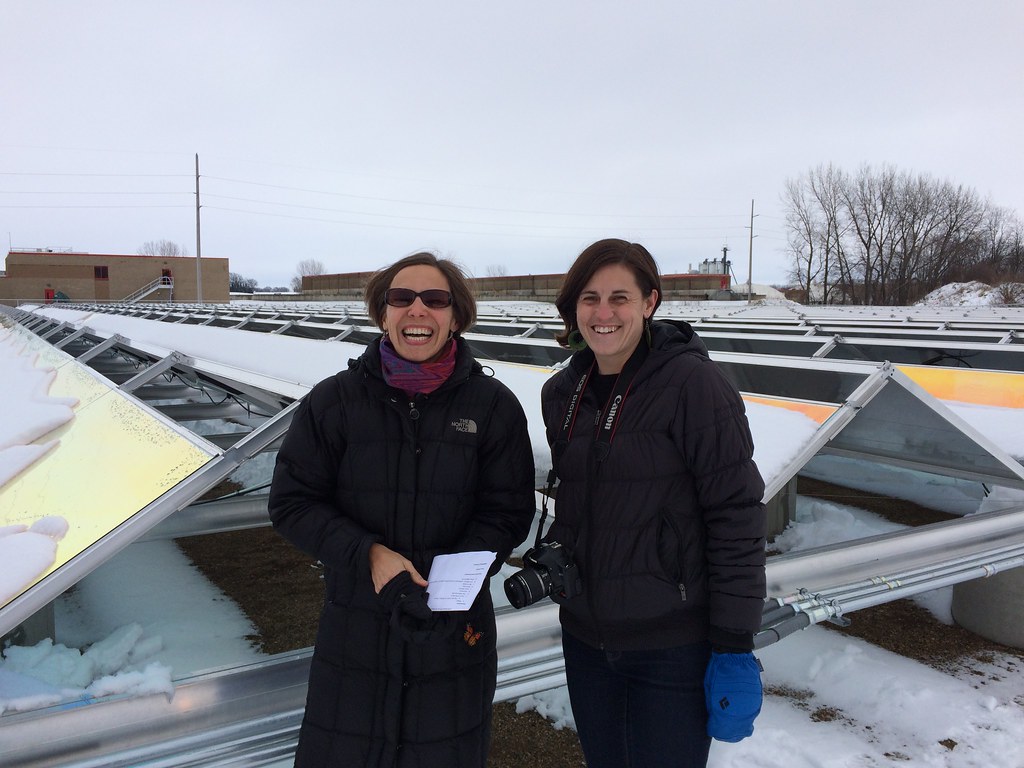Now that the array is online it’s clear that the ways in which it went above and beyond make it a shining example. For one, to ensure safety and aid replication, extra measures have been included to ensure that the landfill site is handled with proper care during installation, operation, and maintenance. One such measure is developing the project to be “non-penetrating” in regards to disturbing the underlying waste materials in the landfill, thereby limiting health and environmental exposures to such materials.
Because it is non-penetrating, despite being ground mounted, the array more closely resembles a flat roof-mounted system, where the panels are mounted on large concrete ballasts, rather than being stuck into the ground. The site’s efforts to not overturn landfill material even extended as far as the fence encircling the array. There, instead of drilling the posts into the ground as is normal procedure when constructing fences, each post is weighted down by a number of cinder blocks covered with rocks and overlain with dirt.
While the type of construction may limit health exposures from the landfill, no amount of ingenuity can control what goes on below the surface. Most landfills, this one included, have a variety of organic and inorganic materials wasting away below the ground. This can lead to what is referred to as “differential settlement,” meaning even a leveled surface may become uneven over time. You can imagine the troubles this may cause for a solar array—the panels are connected to each other and need to be squared up to ensure proper functioning. If the land beneath the panels were to settle unevenly, there is potential that the dimensions would be thrown off and the array sent into disarray.
Luckily, the dump hasn’t been used since the 1980s. The older a landfill is the less of a problem differential settlement poses. Even so, maintenance parameters are in place to address differential settlement issues that may occur. The system design allows for shims to be placed under the supporting rails if any of the concrete bases settle too much over time.
A shining example for others
As Minnesota’s solar industry blossoms, more and more sites will need to be examined for solar potential. The hope is that Hutchinson’s project will help remove the obstacles and insecurities associated with brownfield development by demonstrating just how feasible it is. All parties win when solar developments make brownfields a little brighter instead of taking up valuable greenspace or other productive land.



